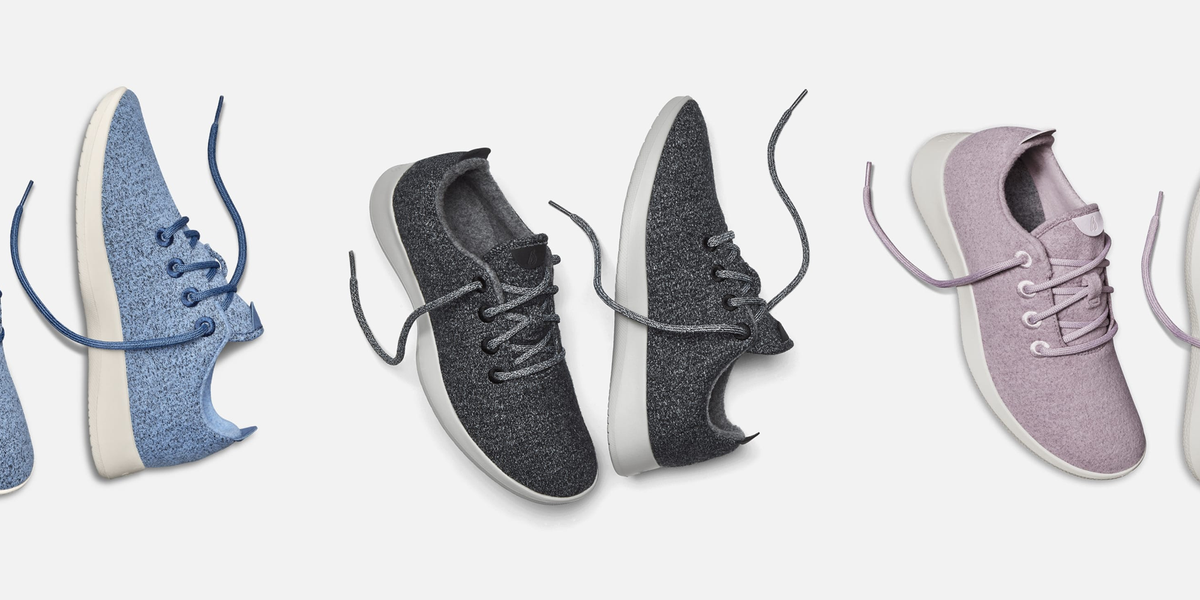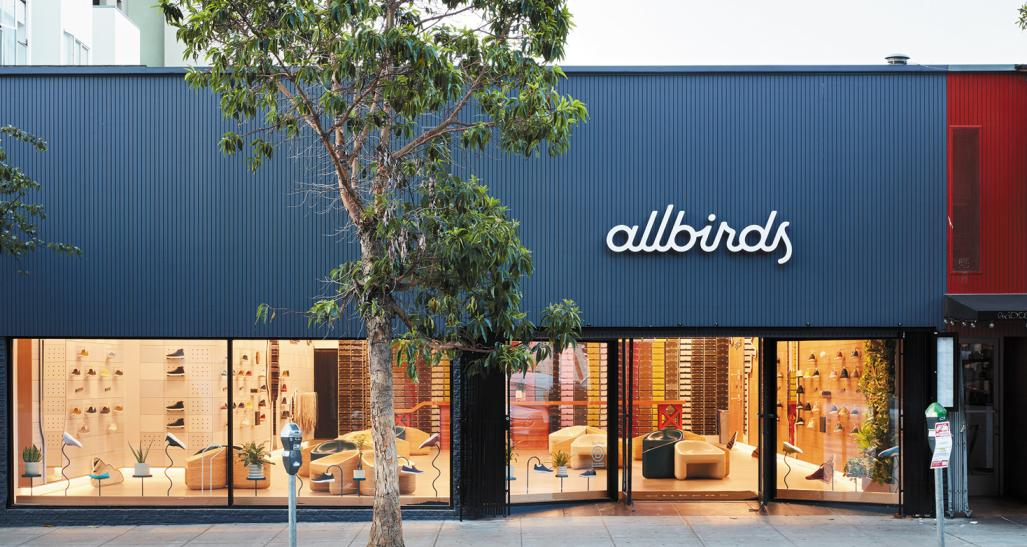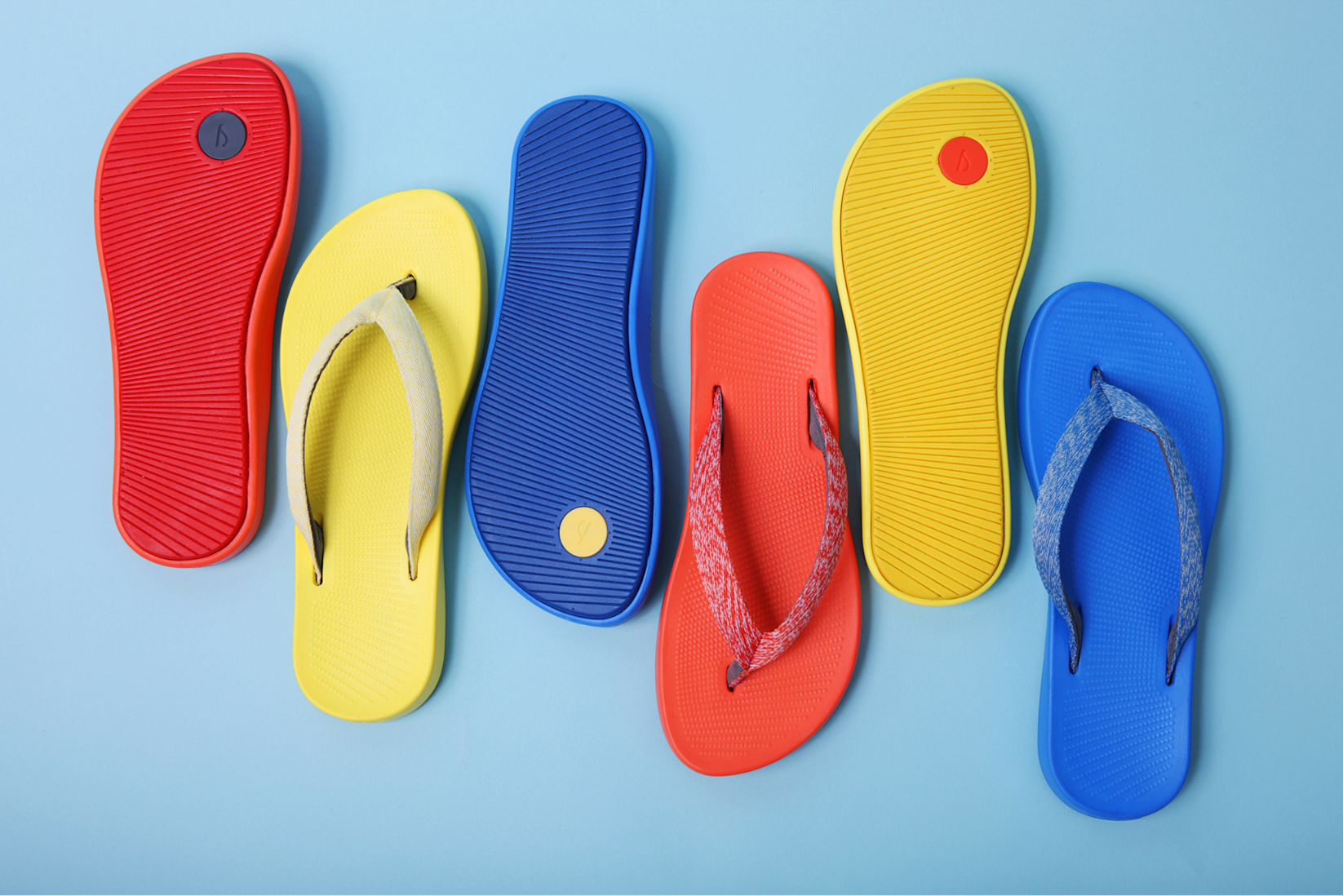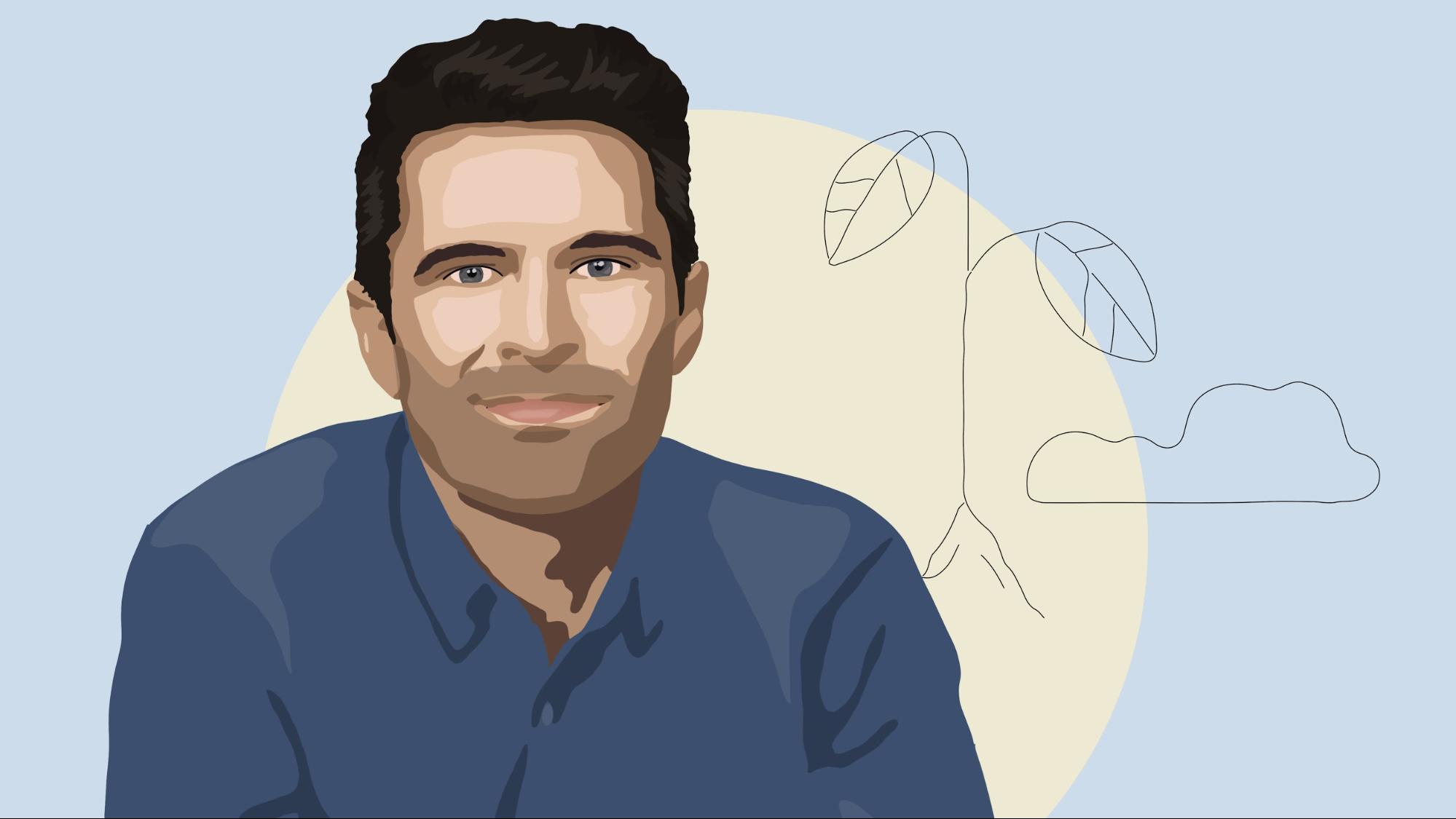In the nouveau world of billion-dollar retail start-ups, there are a select handful of confirmed A-list companies. Gymshark. Away. Warby Parker.
Tim Brown is behind one of the class’ most notable unicorns. The former soccer star, who reached the 2010 World Cup as a member of New Zealand’s national team, is the co-founder and co-CEO ofAllbirds, which can now lay claim to avaluation nearing $2 billionand is most famously known as the maker of the“world’s most comfortable shoes.”
From his home in San Francisco, Brown discusses why only bad retail is dying, the benefits to his relatively unusual relationship as co-CEO, alongside Allbirds’ other co-founder, Joey Zwillinger, and his company’s quest to do something never done before: operate a consumer business without leaving any carbon footprint behind.
“One of the challenges with a topic like sustainability is that it means 10 different things to 10 different people,” he says. “The idea where we've landed as a business is that they must all ladder up to this unifying metric around carbon. Carbon is the thing that we must get under control.”
(This interview has been edited and condensed for clarity.)
The story of Allbirds’ beginnings has been well shared—from the shoe made of merino wool you placed for crowdfunding on Kickstarter in 2014, to the official forming of your company in 2016, to people likeBarack Obamabeing spotted in your sneakers. In the rise of Allbirds, what was the smartest thing you did, and what was the greatest mistake you made along the way?
Brown:I like to say that this was a bad idea for a long time before it was a good one.
I think the smartest thing I did was two things really. [The first was to] have a go at it. It’s really easy to talk about something, but much, much harder to do it. The second was that I did it with someone—with a co-founder, Joey (Zwillinger,pictured below, right, with Brown). I found in him a partner. Someone to laugh through the challenges of doing this, someone with a complementary set of skills, but perhaps most importantly, [someone with a shared] purpose around sustainability—the reason why we were doing it beyond just making a product and designing and building products, which is what I had been working on before I met him.

What was the biggest mistake? Write a business plan at the start, that's always a good one. (Laughs) Don't find factories on Google, I think that's important.
Backing myself a little bit earlier—I think it took meeting Joey to believe in the true potential of this. Maybe that speaks a little bit to the partnership and the importance of that for me. But I wish that I'd dreamed a little bigger. I think if I had, it might’ve helped me make some smarter decisions in terms of who I work with and who I partner with.
Allbirds makes headlines quite often with the funding it receives from investors. In the fall of 2020, another $100 million came in, thistime valuing the company at $1.7 billion. But your first funding source was altogether something different—a research grant you obtained from the wool industry in New Zealand. How much were you granted then, and what case did you have to make to receive that money?
I was in New Zealand at the time, playing football in theA-Leaguein Australia for New Zealand's sole team that plays in that league, and dreaming of going to a World Cup with New Zealand, which hadn't yet happened at that point. I was reading a magazine one day about the wool industry in New Zealand.
New Zealand has a long connection with sheep farming going back decades and decades to the founding of the country. Peak sheep in New Zealand was something like 80 million sheep [around] 1980. Now, there are less than 30 million [sheep], and no one is growing up in New Zealand dreaming of being a sheep farmer. There was a huge opportunity for innovation there. The article I was reading said that this industry was in decline and looking for new ideas.
I want to say it was a dollar match thing. We put in a dollar, they put in a dollar. Over a year or 18 months, [the funding board] developed a fabric for us that was the basis of the first Kickstarter.
Something your company's leadership has been vocal about is it being a good idea to have discipline as you grow as a business. What's something that Allbirds has had to perhaps hold back or slow down on over the years in the interest of adhering to that discipline?
Brown:One of the things we did well was we said no to a lot of stuff. At a high level, we weren't going to have a range of shoes. We were going to launch with one shoe. In traditional footwear, that's not what you do. We had a number of experts come through from the footwear industry tell us that this was never going to work.
We launched with just one shoe because we wanted to get that right, and we wanted a vertical model, an online model, that really was about delivering one great, singular solution. Then we wanted to focus on the materials, and we figured we could do that bit with one silhouette. We went on to sell a million pairs of that shoe through the first 18 months of the brand being around.

There was a lot of temptation to go and listen to people, particularly experts, and so the ability to say no [was crucial]. Oftentimes with feedback, or even with innovation, there's the temptation to satisfy a lot of people, and maybe take a little bit from here and a little bit from there, which you should do at times. But if you've got an idea, or you're planning to launch a product, and everyone thinks it's a good idea, then you're probably on the wrong track. You're almost certainly on the wrong track.
的能力,很多事情说不,you can focus on the one or two things that you could do that are different, that are going to break through, is really important. I think we did that well. And it extends through to when you launch the business. I'm going to say no to every silver bullet and shiny object that comes in my path: the meetings, the coffees, the time with investors.
You can spend a lot of timenotfocused on the thing that's really important. So you have to find really nice, polite ways of saying no regularly so that you can focus. Every moment is spent on the things that matter.
Allbirds is up over20 stores nowglobally, and those can be found everywhere from New York City to Berlin to Beijing. Generally, retail is not precisely having its moment right now, but there are important companies—Warby Parker comes to mind—that are doubling down on retail, and Allbirds has been public that it is still committed to the channel.
Take us inside the company for a moment over 2020, and walk us through some of the conversations had at Allbirds as they concern what to do about stores going forward.
Brown:Even when we founded the business four years ago, there was this idea that retail was dying. I'll paraphrase one of our board members and one of the founders of Warby Parker, Neil Blumenthal, who said something along the lines of, “Retail’s not dying, just bad retail is.” The bar was being raised in terms of the retail experience.
We rented our first office space, and it was in a part of San Francisco that was being taken over by these tech companies, but it was actually a retail destination.
So the landlord really wanted a tenant that was not going to grey out the windows, but actually open a store. We did this much sooner than we thought, one of those happy accidents, and spent $7,000 to build a little store under our office that was 600 square feet. Joey and I started working in it each afternoon.
We were already addicted to customer feedback on how we could improve our product. Then you walk into a retail environment where customers come in, and the feedback is even quicker. Then you realize another thing: People crave that connection and the actual act of touching materials. Trying on shoes is something that people have remembered since childhood, with that silver metal sizing thing that no one knows the name of.
[Retail] has slowed down a little bit. It's been challenged in COVID. But those fundamental insights, the fundamental belief and the importance of that channel, and the fundamental fun that we have working and hiring people around it and building the business that way, is going to come back. It's just a matter of time. We really, really believe in it.

Whether it is in store or through your website, Allbirds has really committed to a direct-to-consumer model since its inception. There was a brief period in 2018 where Allbirds shoes could be found at Nordstrom, but you have stuck to your guns in that you want to meet your customers where they are and sell to them without somebody else in the way. Are there scenarios you discuss internally at the company where wholesaling your products to other retailers makes sense?
Brown:I wouldn't say that we’re so dogmatic about channel. I think in the case of Nordstrom, that was an opportunity that came to us where we felt we could learn from one of the biggest footwear retailers in the world.
I think [we choose opportunities] through the lens of learning. And equally, the ability to maintain control of our ecosystem, for better or worse, and get feedback—constantly being able to improve our products and focus on our customer service—is really fundamental and important to us.
In the early days, the opportunity to get international was clear. There were lots of people around the world in different countries that wanted our product, and there was the temptation to just drop ship it, just turn it on, and open up quite quickly. Instead, we did it the other way—much more slowly. We built offices in key countries, and focused on key markets because we wanted to make the experience great.
I think you make [sales channel] decisions based on what you think is most important. If you make them short-term focused on revenue, I think you can get yourself into trouble. If you focus on what you think your competitive advantages are—learning, feedback, rapid improvement of the product, and, ultimately, your values and the vision for what you want as a brand—you can navigate those types of choices.
It's not to say “no” to wholesale forever. We'll always evaluate:Can we learn? Can we provide a better customer experience there? Can we expose our purpose around sustainability in the environment to a wider audience with people that might not have met us?Those types of considerations allow you to make better choices in those types of moments.
Can you stay direct to consumer and reach the amount of people you hope to touch with the brand?
Brown:Oh, absolutely. I think there are some great examples, like Lululemon, which was one vertical retailer that has reached an enormous scale.
We're in our very early days. We're nearly five years into this, 20 stores, still very much in the first few chapters of where we could get to. So I think there's still a lot of potential for growth.
Joey Zwillinger is not merely your co-founder—he's also your co-CEO. That is an arrangement at companies of scale that is either perfectly symbiotic, or sometimes historically has proven to be a very difficult proposition. With you and Joey, in fact, you met long before Allbirds. Your wives were college roommates, so there is a personal bond there unique to your situation.
But somewhere in the mid-2010s, you and Joey began to seriously talk about becoming business partners. From where you sat then, after having spent years of your life and the sweat equity and the personal financial equity that had gone into the creation of your wool runners to that point, what was it like to bring somebody new to share that with?
Brown:For me, personally, it was a relief. I found the person that I should be doing this with. Some people can do this by themselves. I certainly had tried and was not happy in doing so.
I was really clear about the one or two things that I could do well and be pretty honest with myself about the gaps—and there were many. The idea of finding a partner was really important, and to do it with Joey in San Francisco through our wives was special.
We bought in pretty early on. I think if you don't [buy in], it doesn't work. We bought in pretty early on to the idea that we could go further together than we could individually. That is still the case right now. It's not to say that it's always been easy, but that partnership is one of the things that I'm most proud of in building this business and, I think, a key part of why we've been successful.
Here's a side of the argument against having co-CEOs: Among Fortune 1000 companies, the median duration of co-CEO arrangementslasts only about two years, which is less than half the tenure of when a single CEO presides at the top of a company of the same size. But then here's this,from the Harvard Business Review: For many companies, “the better alternative is two leaders in the role. CEOs need not be perfect if they have a partner who complements them.”
When would you make the case that a company would benefit most from having more than one leader in its most senior position?
Brown:Well, it's a great question. I think this is so highly specific and contextual that it's really hard to say.
On some deeper level, two people are going to [have to] buy into the idea that they're complementary—but it also means that there is conflict built into that. Joey and I are just different across the board: different types of skill sets, different in terms of cultural backgrounds, different in terms of introversion and extraversion. The list goes on. But I think we have a common ground that's really, really important around competitiveness, around the importance of values, honesty, and family.
Again, the context and the situation where that's exactly right and it works, and the context and the situation where that's exactly wrong, I just don't know. Maybe if it's a bigger business at scale, where there's less creative decision making and things are a little clearer, and it's about keeping the trains running on time, maybe the fundamental idea of debate and discussion is not helpful.
I'd struggle to see where two heads aren't better than one in my particular experience. The spirit of debate, I think, has fueled everything that we've done.

In 2018, Allbirds debuted a material that it spent three years developing calledSweetFoam. In essence, SweetFoam is a new textile made of sugarcane that would form a much more environmentally sensitive shoe sole, which, traditionally almost across the footwear industry, is made from petroleum.
Now, as an achievement itself, that ain't bad. But what you did was you took this proprietary formula for SweetFoam, and you made it open source for free. What companies have since taken you up on that offer?
Brown:有100家公司在全球范围内,which is just awesome. I think this is the sweet spot, if you will, of the intersection of purpose and business success. We opened that up as an open-source material not just because we were good guys, but with the idea that the more people that would use it, the cost would come down, and we factored that into our agreement with the supplier.
We didn't invent this in the sense that this couldn't have been created decades before. I think we just had the ability to understand why it was important, and to understand how lots of people might be able to connect to this idea and make it stronger.
当你想到一个话题像可持续性nd climate change, it's very, very clear that Allbirds is a tiny drop in the ocean. If we're successful, it's just not enough. Even if the footwear industry or the fashion industry is successful, it's not enough. This has to be a collective action. It necessitates different ways of working and different business models. Ultimately, that's what we've tried to show was possible.
Allbirds is in the business of full transparency when it comes to the carbon footprint emitted in the lifecycle of its products. Your company is committed to taxing itself to offset all its carbon emissions and, more recently than that, has begunputting labels on each of your goodsalmost like the nutrition label you see on a box of cereal detailing exactly what carbon emissions go into that product—from the materials to the manufacturing to the use to the end of life.
All this is in the pursuit of zero: Allbirds is trying to lower its carbon footprint each year and to eventually get to a place where it leaves no carbon footprint whatsoever. Is this humanly possible to achieve, or is whether it's actually possible or not missing the point?
Brown:Yes, it has to be, or otherwise we're in trouble.
One of the challenges with a topic like sustainability is that it means 10 different things to 10 different people. To you it might be about air quality and water quality, it might be about end of life, recyclability, animal welfare, human welfare within the supply chain, micro plastics in the ocean, or plastic use generally, and on and on and on. All of those issues are really important. They're critical. But they sometimes have competing incentives, conflicting ways of tackling the problems that they represent.
The idea where we've landed as a business is that they must all ladder up to this unifying metric around carbon. Carbon is the thing that we must get under control. We were able to realize that we needed to measure our carbon impact as a business, which we've done, but then we really needed to start innovating to drive that number down.
Traditionally, when you're making products, you're thinking about what it looks like, what's the utility, how it uses, how comfortable it is, how it functions, and how much it costs. We've introduced [another] variable or constraint around carbon, and it's starting to change the way we think about designing and making our products. And it's really powerful. We're in the early days of it, but I think, yes, zero is the goal. I absolutely do believe we can get there.






